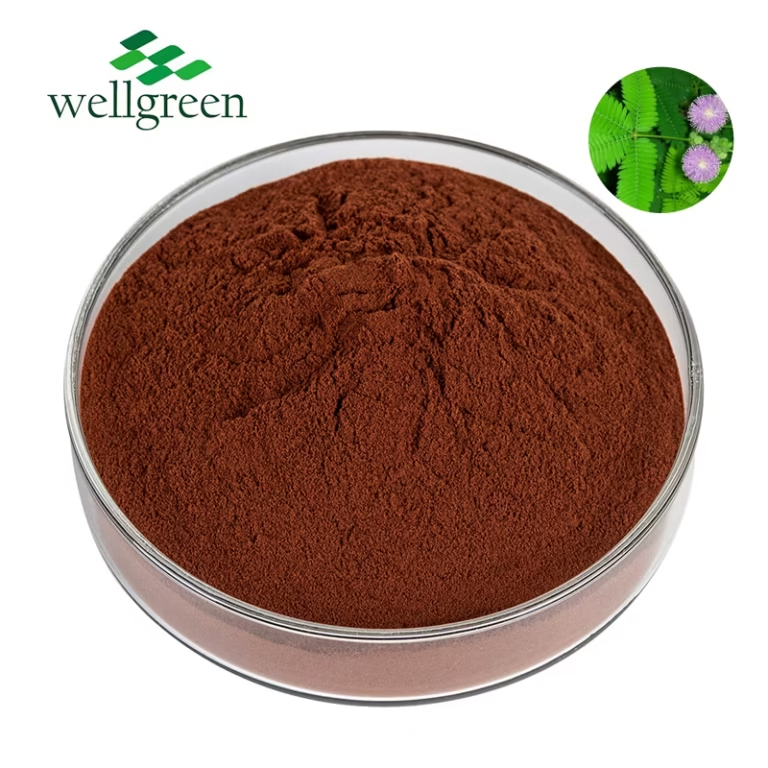Mimosa Hostilis: A Sacred Plant for Indigenous Cultures

Mimosa hostilis is a venerable plant deeply ingrained in the traditions of various Indigenous cultures across South America. For centuries, it has been employed by indigenous communities for its multifaceted spiritual and medicinal applications. The root bark, known as teonanácalli, is particularly revered for its entheogenic effects, believed to unveil profound visions that facilitate growth.
Through traditions, the plant spirit of Mimosa hostilis is invoked, guiding individuals on a path of self-discovery and understanding with their inner selves. The knowledge concerning this sacred plant has been passed down through generations, preserving the rich cultural heritage and wisdom of these communities.
Exploring MHRB Extract: Unlocking Mimosa Hostilis's Potential
Mimosa hostilis, a vibrant plant indigenous to the Americas, has captured the attention of both researchers here for centuries. This intriguing species harbors within its roots a potent compound known as MHRB, which has gained significant popularity in recent times.
MHRB extract is celebrated for its effects, often associated with introspective journeys. Ancient practices suggest a long history of MHRB use in cultural practices.
- Experts continue to investigate the active compounds of MHRB, seeking to uncover its full spectrum of effects.
- The intricacies surrounding MHRB usage require responsibility. It is vital to engage the expertise of knowledgeable individuals before exploring any practices involving this powerful extract.
Exploring the Ethnobotanical Uses of Mimosa tenuiflora
Mimosa tenuiflori, commonly acknowledged as "the acacia", holds a significant position within the ethnobotany literature of diverse communities. Its versatile properties have been explored for centuries in traditional medicinal practices, as well as in rituals. The bark of this remarkable plant possess a rich spectrum of bioactive compounds believed to exhibit medicinal effects.
From curing ailments like pain to promoting spiritual insight, Mimosa tenuiflora has long been revered for its profound influence on human life.
ALook into the Chemistry and Pharmacology of Mimosa Hostilis Root Bark
Mimosa hostilis root bark has a complex chemical profile, primarily known for its high concentrations of alkaloids. Among these, copyright and tetrahydroharmine are particularly important. These substances possess a range of pharmacological properties, including hallucinogenic effects. The bark is also diverse alkaloids, including norharmane, which may contribute to its total pharmacological profile.
The traditional applications of Mimosa hostilis root bark include a range of medicinal purposes, particularly in native communities. However, it is crucial to recognize that scientific research on the efficacy of these uses remains limited.
Unlocking the Power of copyright with Mimosa Hostilis
Mimosa hostilis, a tree native to South America, has captured the attention of researchers and individuals alike for its potent compounds, particularly dimethyltryptamine, or copyright. copyright is a powerful copyright substance known for producing intense altered states of consciousness. By ingesting the bark of Mimosa hostilis, one can explore the realms of copyright-induced experiences. It is essential to remember that copyright is a strong substance and should be treated with reverence.
- Safe use is paramount, and researching from experienced individuals or knowledgeable sources is highly recommended.
- The journey of copyright can be both transformative but also potentially overwhelming. It is essential to prepare both mentally and physically for the outcomes that may arise.
copyright from Mimosa hostilis provides a unique opportunity to journey within the depths of consciousness, potentially leading to personal growth and awareness.
Moral dilemmas Using Mimosa Hostilis
The utilization of Mimosa hostilis for traditional purposes raises a myriad of ethical questions. While some argue that its historic significance warrants respect and tolerance, others warn its use due to potential harmful consequences. It's crucial to approach this complex issue with thoughtfulness, taking into account the cultural contexts and potential implications. A nuanced perspective is essential for navigating the ethical nuances surrounding Mimosa hostilis.
Raising Mimosa Hostilis: A Guide for Growers
Embarking on the quest of cultivating Mimosa Hostilis can be a fulfilling experience for the dedicated grower. This fascinating plant, endemic to tropical regions of the Americas, has earned significant recognition in recent years due to its unique properties. Before your cultivation mission, it is crucial to understand the specific requirements this plant demands to thrive.
- Providing adequate sunlight is paramount for healthy Mimosa Hostilis growth. These plants prosper in direct sunlight, ideally receiving a minimum of six hours per day.
- Preserving well-drained soil is essential to prevent root rot, a common ailment that can ruin your plants. A mixture of sandy soil with decomposed matter is suitable.
- Consistent watering is necessary, but be mindful not to overwater your Mimosa Hostilis. Allow the top inch of soil to dehydrate before providing another watering.
The Shamanic Traditions Surrounding Mimosa Hostilis
Deep within the sacred forests of South America, the shrine of vision have been woven for generations. Among these powerful allies is Mimosa Hostilis, a humble plant revered by the shamanspiritual traditions of indigenouscommunities. It contains within its roots a river of wisdom, guiding spirits on their journeys into the unseen.
The medicine men understand that Mimosa Hostilis is not simply a plant; it is a gateway between dimensions, connecting us to the powerful energies that flowaround all of creation.
Confronting Legal Challenges with Mimosa Hostilis
The legal status of mimosa hostilis varies greatly from one country to another. That means that the permissibility of possessing, using, or growing this plant revolves around your specific geographic location.
Furthermore, laws and regulations concerning mimosa hostilis are constantly adapting. It is therefore essential that you thoroughly research the specific legal framework in your area.
- Consulting a legal professional who specializes in hemp laws is highly recommended.
- Staying informed about any updates to the law can help you prevent any potential legal issues.
Mimosa Hostilis and Spiritual Exploration: A Journey Inward seeking
The ancient wisdom whispered through the rustling leaves of Mimosa Hostilis calls to explorers on a inner quest. Venturing upon this path is to awaken hidden dimensions within, where the veil between worlds blurs. It's a profound experience that enlightens the soul, revealing truths dormant beneath the surface. As you dissolve with the essence of this sacred plant, be prepared for visions that reshape your perception.
- Welcome the unknown with an open heart and a eager mind.
- Surrender all expectations and allow yourself to be carried by the rhythm.
- Remember, this is a journey of self-discovery. Have faith in your own inner compass.
The wisdom gained through Mimosa Hostilis echoes long after the experience has faded. It is a blessing that can change your life in profound and lasting ways.
Understanding the Dangers and Rewards of Mimosa Hostilis
Mimosa hostilis is a plant native to South America, gaining increasing attention for its potential pharmacological properties. While it contains valuable compounds like copyright, responsible for its psychoactive effects, it's crucial to approach this plant with awareness. Understanding both the hazards and the benefits of Mimosa hostilis is essential for safe and informed use. Potential negative consequences can include physical reactions, emphasizing the need for thorough research, responsible consumption, and a safe environment.
- It's important to consult with a healthcare professional before using Mimosa hostilis or any products derived from it.
- Proper dosage is crucial to minimize potential risks.
- Be aware of the regulations surrounding Mimosa hostilis in your region.
- Always prioritize safety and well-being when exploring the use of this plant.
